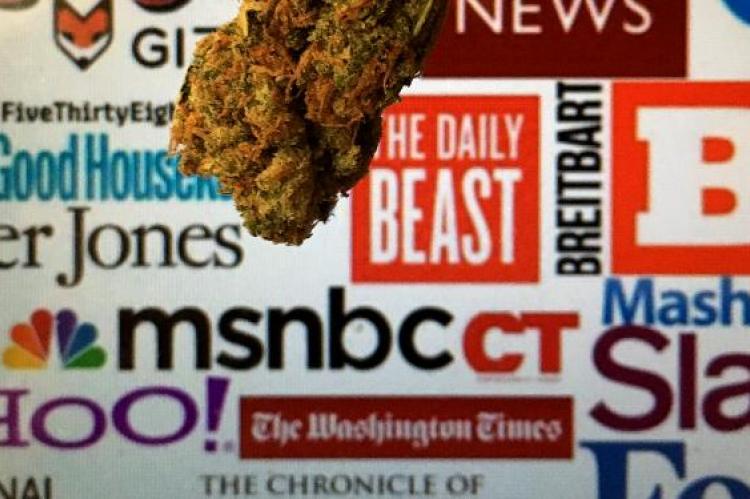3 Key Ways Marketing And Communications Have Evolved In Cannabis
We’ve been fortunate to have had a front-row seat to witness the emergence of the legal cannabis industry in the media over the past several years. Back in 2015, we started to get approached by emerging cannabis brands that were looking to destigmatize the perception around their products, and more importantly, bring a greater level of objective reporting around the industry as a whole. At the time, most of these brands were well-reputed in niche cannabis industry circles, but were looking to take the next step and achieve mainstream awareness. Back then, most mainstream media outlets were curious about the industry, but few actually took the leap and covered it for their audiences.
In 2017, we eventually launched a dedicated practice to help brands in the legal cannabis industry achieve mainstream credibility, and today, the industry occupies the headlines of mainstream media just as much as any sector of our economy. According to a recent report from cannabis market research firm BDS Analytics, legal adult-use spending reached $14.9 billion worldwide in 2019 and is projected to reach $20.7 billion in 2020. Unquestionably, the industry has made significant strides since the early days.
Through it all, we’ve learned many lessons and witnessed first-hand just how much has changed with regard to how legal cannabis brands can successfully put themselves on the mainstream map. Here are three key takeaways regarding how marketing and communications strategies have evolved since the early days.
From Trade to Mainstream
Cannabis’ ascension to the mainstream has required brands to adjust their go-to-market strategies with an emphasis on digestible messaging, keeping the broader consumer in mind. Back in the early days, the media consumer who was interested in cannabis content tended to be younger, niche-oriented and primarily male. In time this has changed dramatically. Today’s media consumer in cannabis is omnipresent. Today’s consumer is female just as much as it is male, it is a baby boomer just as much as it is a millennial, and it is a high earner just as much as it is a middle-class income household.
Before states like Colorado and Washington became the first to legalize recreational cannabis, only a select group of media outlets covered cannabis in a prominent fashion. Publications such as High Times, Dope Magazine and Merry Jane were early pioneers in this regard. As more states welcomed legal markets and cannabis became widely-accepted as a topic, household media outlets such as CNN, The New York Times, and Rolling Stone took note and introduced dedicated cannabis beats. Additionally, with CBD products pouring into mainstream retail stores across the county, journalists across business, lifestyle, health and wellness, finance, and retail verticals have increasingly covered the sector.
High-quality cannabis reporting still requires a certain level of domain knowledge, and as such, many of the journalists who started their careers at small trade publications have gone on to report for these mainstream media outlets. The shift from trade to mainstream media adoption has been one of the most refreshing and rewarding byproducts of making the decision to service clients in the legal cannabis sector.
From Local to National
It wasn’t long ago when cannabis brands were so focused on the local consumer audience in their respective markets that they rarely made an attempt to appeal to the national consumer. In the early days, cannabis brands focused heavily on securing local media coverage to drive sales of their products, dispensaries or services. This was a logical strategy since the product reach and addressable audience was localized.
However, as growth opportunities and national scale became achievable, the demand for national exposure among cannabis brands grew proportionately. In order to drive specific business outcomes that applied to a national audience - raising capital from blue chip investors, recruiting talent from household brands in other sectors, and generating sales from a national audience - cannabis brands were forced to start appealing to a national consumer rather than a local consumer.
Widespread acceptance of cannabis has presented brands with newfound opportunities to expand their go-to-market strategies and messaging beyond their local communities and into the national conversation. Cannabis industry experts that were once perceived as too niche are now front and center in the movement to educate the masses through the national media.
These legacy voices have proven to be crucial to educating the public about the nuances that make the cannabis sector unique and differentiated from so many other fields. To have witnessed these ambassadors and brands pivot from a local to a national audience has been a breath of fresh air.
Lean on Legacy
The cannabis marketplace is vastly different today than when we first began servicing clients within the space years ago. As the industry continues to evolve, there remains a handful of legacy brands, voices and ambassadors that have stood the test of time. What is remarkable about these individuals and entities is that they have reinvented themselves to appeal to today’s cannabis media consumer while still maintaining a message that is rooted in the history and tradition that only they can provide as early pioneers in cannabis. Today’s cannabis consumer is interested in not only strains, products, and accessories, but how the industry as a whole is affected by the current news headlines. Whether it be stock performance, the latest health trends, or changes within the regulatory environment, the modern day consumer is interested in a more comprehensive, 360° view of cannabis. Consequently, the voices and brands that have stood the test of time in the media have remained loyal to their brand identity while pivoting their marketing strategy so that it transcends niche trade publications and appeals to the mainstream media consumer.
- Log in to post comments

